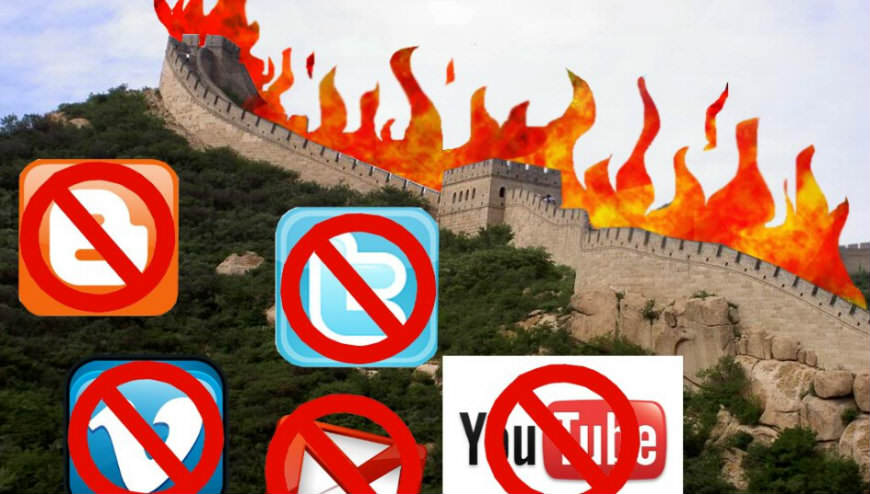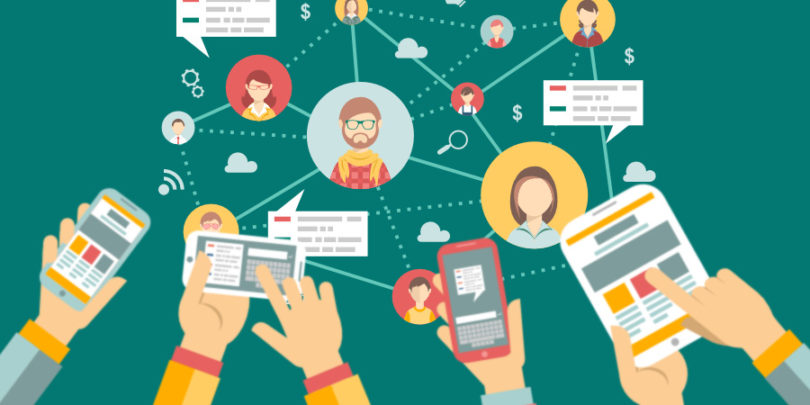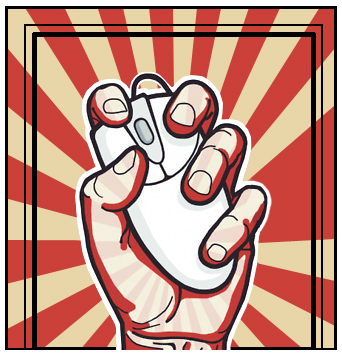ABSTRACT
This paper is aimed at analysing the effects of social media influencers on social networking sites such as Facebook, Instagram and LinkedIn on character-building online and/or the construction of one’s identity, with emphasis laid upon the projection of the self of teenagers, with more focus on the female gender. Furthermore, this paper will also elaborate on the nuances in social networks users’ online portrayal vis-à-vis their authentic real-life identities, the spotlight been on young females.
Introduction
With the advent of Web 2.0 and a social networks-based influenced society, the curated introduction of a people’s personality. With social network platforms, for example, Instagram, Facebook, Twitter and LinkedIn making ready, people have the freshly discovered chance to impart their lives to open online, in manners not already conceivable. This uprise of the Web 2.0 has took into consideration the up ascent of web based life influencers, and puts to light the debate between the virtual online lifestyle and real life. Curated characters could conceivably be destructive to naive social network users, especially those of a youthful age. In any case, for what reason should web based life influencers be relied upon to demonstrate certain sides of themselves all alone close to home records, and for what reason should general registered social networks’ users have any assumptions regarding what they share, allowed that it is politically right. This additionally stems off into the ascent of supported posts, and the impact that they can have on viewers and people who interact with them. The idea of curated personalities is likewise present inside a dialog in regards to internet dating and catfishing, just as including a significant job inside the word related domain. Social media platforms such as Instagram and Linkedin enable clients to minister a hopeful picture of their life, learning of this upsets the trust among client and web-based social networking influencer.
Social networks and character-building
The mechanical foundation on which our overall population is presently manufactured has obviously prompted a move in the manner online cooperation is performed, allowing new habits by which we pass on what needs be and keep up social associations. In the online circle, self-depiction is generally brought out through web based life stages, which have isolated both physical goals and common expressive motions that exist in eye to eye association, empowering customers to interface across over presence through a curated type of ‘oneself’. As indicated by Janusz Mierzwa and Hubert Jurjewicz (2016, p.143), a few discoveries has assessed the capability of the connection between internet based life and personality. In a similar vein, those necessities that were customarily created in the real-life world is currently based on creation of long range informal communication destinations as the online world. For instance, it was found that that the huge reasons that induce users to utilize internet based life platforms are that they have the likelihood to seek to their requirements for their identity development and in light of the fact that they get the chance to encounter the best it could be in those stages. (Wilson, et al, 2010). The various requirements for a person’s personality development are not interesting and independent, yet it is named a chain of command of fundamental needs; the mental needs, security needs, acquainted necessities, requirements for confidence and requirements for self-acknowledgment. These factors as a whole define the identity of the individual both online and offline, irrespectively.
Authenticity a facade on social networks?
With every one of the issues connected to advanced personalities and the discontinuity of the genuine self on the web, realness has been at a high hazard. Surely, realness is being controlled by clients to depict another personality. Legitimacy can be seen from alternate points of view as it relies upon the specific situation and the conditions. It very well may be what is veritable and not an impersonation or what has been approved with a genuine stamp that guarantees its authenticity (Van Leeuwen, 2001). In this specific situation, credibility is about the truth behind a person or thing and the significantly felt emotions or words that are being communicated (Van Leeuwen, 2001). Realness is socially developed as it very well may be affected by standards or disconnected and online desires (Salisbury and Pooley, 2017). Subsequently, it is inescapable that online networking will affect on individuals’ credibility as it is engraved in their day by day lives. Internet based life is executing legitimacy of clients which ponders their advanced way of life just as affecting on their disconnected selves. This has to do with individual marking and performativity. Having a record via web-based networking media these days resumes to selling and/or merchandising one’s life as a brand. Right off the bat, online life stages are not free for any reasons. They are utilizing individuals’ data to further their own potential benefit. Also, the users are so inundated into the winding of anticipating themselves and having a pleasant style online that they begin to create content that mirror their own image when joined through and through (Stoller, 2013). They play out their image which floats them far from their valid selves. In any case, on the other hand, for what reason is each post on Facebook course of events or Instagram channels comparable? For what reason are clients keen on the measure of preferences and offers, more than conveying or working together online which was the substance of internet based life long time back. The role of the Internet in this participatory culture has long been surpassed, as it is now a medium through which the self an image of the self is been projected.
Social networks vs. Teenagers
As teenagers look for a feeling of self and individual personality, a ton of motivation will originate from the surge of data that sources from any type of media before them, especially online networking. Given that a component of character development is “considering the sort of individual you need to be” (Arnett, 2010, p.340), there is a great deal to consider when a specific account of what somebody ought to resemble, and what they ought to do, and at what age they ought to do that is unequivocally authorized. This can make pressures rise when thoughts regarding what is viewed as proper and unseemly to share via web-based networking media strife (Mascheroni, et al; 2015). As online networking utilization as a general rule rewards people for transferring and sharing just constructive pictures through their adherents’ preferences and remarks, this makes a tricky cycle of just constructive self-discernment. Particularly thinking about that photographs are seen in all respects rapidly and with constrained exertion, if the standard is for some random watcher to allocate just a small amount of their ability to focus to a photograph, that portion is bound to increment if the photographs are appealing. This in this way urges a person to produce solely constructive substance, in the expectations that it will hold the consideration of their crowd for more.
Internet based life influencers are simple for adolescents to get put resources into, as they are like their groups of onlookers, and subsequently all the more engaging. Recognizable proof is simple when there is a shape there to impersonate and build ‘fictional’ or ‘improved’ identity, shadowing out any ‘flaws’.
Genuineness is socially built as it very well may be affected by standards or disconnected and online desires (Salisbury and Pooley, 2017). Thus, it is unavoidable that online networking will affect on individuals’ realness as it is engraved in their every day lives. Internet based life is slaughtering validness of clients which ponders their advanced way of life just as affecting on their disconnected selves. This has to do with individual marking and performativity. Having a record via web-based networking media these days resumes to ‘selling’ one’s life as a brand. Right off the bat, internet based life stages are not free for any reasons. They are utilizing individuals’ data to further their own potential benefit.
Furthermore, clients are so inundated into the winding of anticipating themselves and having a pleasant feel online that they begin to create content that mirror their own image when consolidated through and through (Stoller, 2013). They play out their image which floats them far from their valid selves. In any case, on the other hand, for what reason is each post on Facebook course of events or Instagram channels comparable? For what reason are clients inspired by the measure of preferences and offers, more than conveying or teaming up online which was the quintessence of internet based life long time back.
Construction of identity vis-à-vis the female gender
Participatory culture, patterns and normativity of practices have a solid effect amid the development of personality. As of late, another half and half of big name has sprung up which is alluded to as an ‘Instagram Star or influencer’. They picked up acclaim and have a major after on Instagram and are liberally paid for consistently posting. A greater part of them are ladies and have their greatest after base inside the female sex who appreciate them and endeavor to imitate their posts and pictures.
Ladies who don’t fit in the exacting attributes of the ‘flawless ladies’ are regularly exposed to trolls who menace them. Trolling is a sort of character extortion, but one that is done with the different plays consenting to it (Donath, 1999). Correspondingly, via web-based networking media, trolls are people with phony profile who leave undesirable remarks under the photos of different clients. Disappointment with one’s body more often than not emerges from contrasting and different clients.
The social correlation hypothesis to clarify how people have an inborn inclination to gauge themselves with others so as to assess their very own abilities and notions. Body issues additionally involve an effect on character whereby an individual either extends an increasingly defenseless picture looking for steady approval via web-based networking media or they embrace a coldhearted and unflinching job.
Conclusion
In the organized universe of a juvenile, at times internet based life influencers can add to conceivably destructive results like negative emotions and getting a handle on left, and in different cases, can add to progressively positive results such as self-articulation. Social media users are also not keen on giving great substance yet rather misleading content that will bring them more devotees. Eventually, character and validness are exteriors via web-based networking media locales which will spread except if users choose to take control of their online traffic and doings.
That is the pith of what I have been attempting to state in this paper, and it comes down to the essential thought that the socially diffuse thought of ‘narcissism’ exists so as to keep certain pathologies under control – it is a socially developed protect against an excess of aggressive conduct. Be that as it may, in the event that we station ourselves through interchanges innovation in manners which accentuate our liberal propensities, at that point open doors for self-revelation are really restricted instead of opened up.
Furthermore, there is a foggy limit between the virtual world and physical world, the equivalent can’t be expressed for on the web and disconnected personality. Personality online is too much developed because of worldwide impacts and patterns; to now and again even be inconvenient to the long periods of advancement originally begun by the suffragettes. Far more terrible, online networking applies mental weight upon young ladies so as to fit unlikely models in order to be socially acknowledged which at that point prompts profound frailties and self-perception issues influencing their self-esteem. The requirement for approval and satisfaction and the hyper sexualisation of females have supplanted significant connections and association.
“In selecting how to present themselves online through photos, pre-teens and teenagers are actually engaging in the definition of what is socially acceptable, what gender and sexual identities are considered appropriate and legitimated, and what, by contrast, are less desirable, contested and stigmatised” (Mascheroni, et al; 2015).
References :
Arnett, J. J. (2010). Adolescence and emerging adulthood: A cultural approach. (4th edition). Upper Saddle River, NJ: Pearson-Prentice Hall.
Boyd, D. (2007). Why Youth (Heart) Social Network Sites: The Role of Networked Publics in Teenage Social Life. In D. Buckingham (Ed.), MacArthur Foundation Series on Digital Learning Youth, Identity, and Digital Media Volume. Cambridge, MA: MIT Press.
Donath, J. (1999). Identity and Deception in the Virtual Community. In P. Kollock, & M. A. Smith (Eds.), Communities in Cyberspace (pp. 29-59). New York: Routledge.
Mascheroni, G., Vincent, J., & Jimenez, E. (2015). “Girls are addicted to likes so they post semi-naked selfies”: Peer mediation, normativity and the construction of identity online. Cyberpsychology: Journal Of Psychosocial Research On Cyberspace, 9(1). doi: 10.5817/cp2015-1-5
Mierzwa, J., & Jurjewicz, H. (2016). Does Facebook, Twitter, Instagram influence well-being and self-esteem among early adolescents. Studia Socialia Cracovensia, 1(14), 137-152. http://dx.doi.org/10.15633/ssc.1880
Papacharissi, Z. (2009). The virtual geographies of social networks: a comparative analysis of Facebook, LinkedIn and ASmallWorld. New Media & Society, 11(1-2), 199-220. doi: 10.1177/1461444808099577
Salisbury, M., & Pooley, J. (2017). The #nofilter Self: The Contest for Authenticity among Social Networking Sites, 2002–2016. Social Sciences, 6(1), 10. doi: 10.3390/socsci6010010
Stoller, E. (2013). Our Shared Future: Social Media, Leadership, Vulnerability, and Digital Identity. Journal Of College And Character, 14(1), 5-10. doi: 10.1515/jcc-2013-0002
Van Leeuwen, T. (2001). What is Authenticity? Discourse Studies, 3(4), 392-397. doi: 10.1177/1461445601003004003


